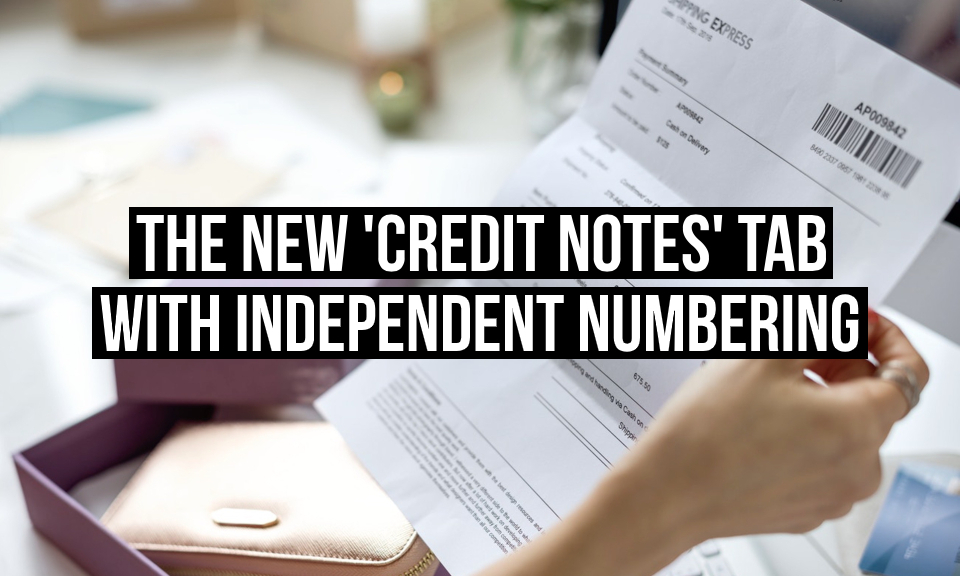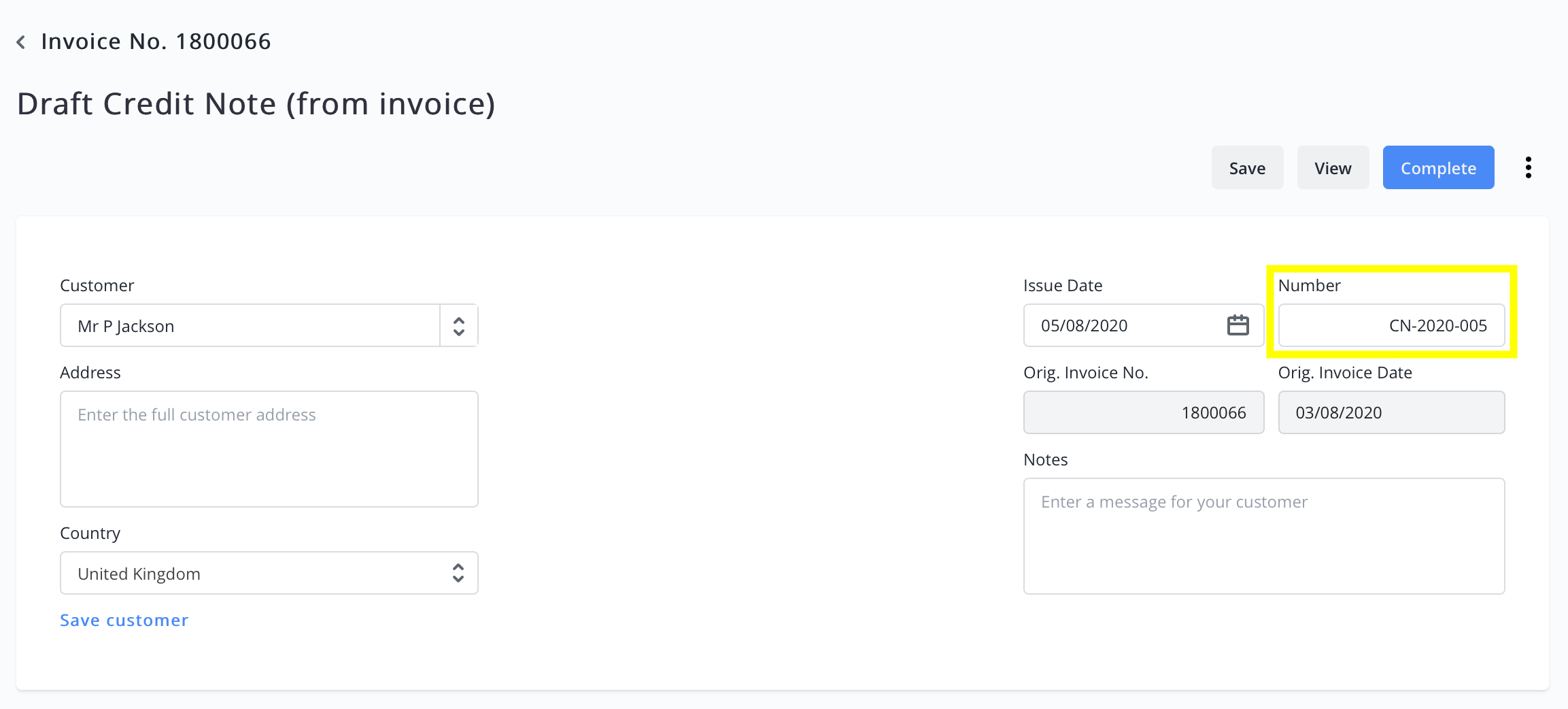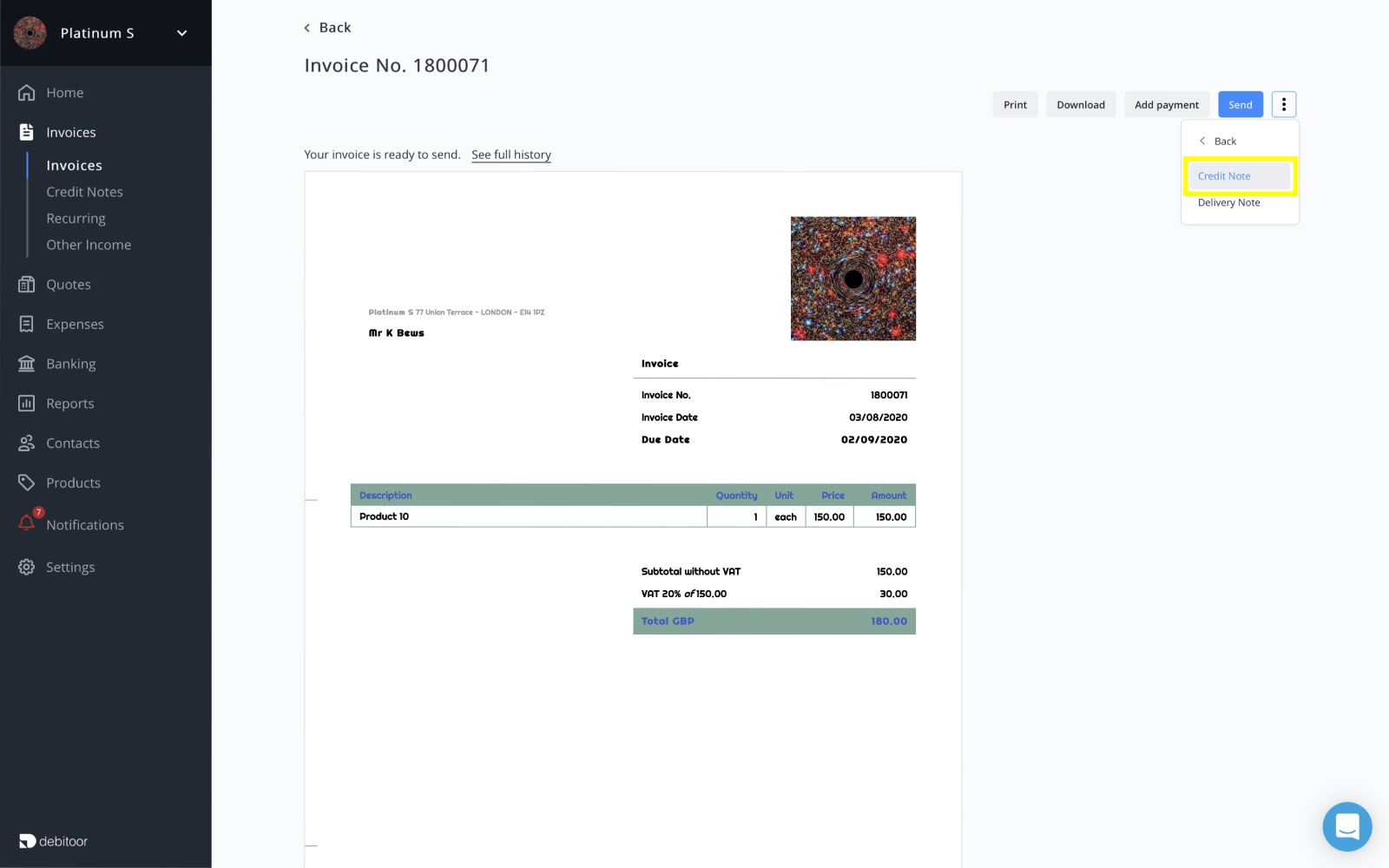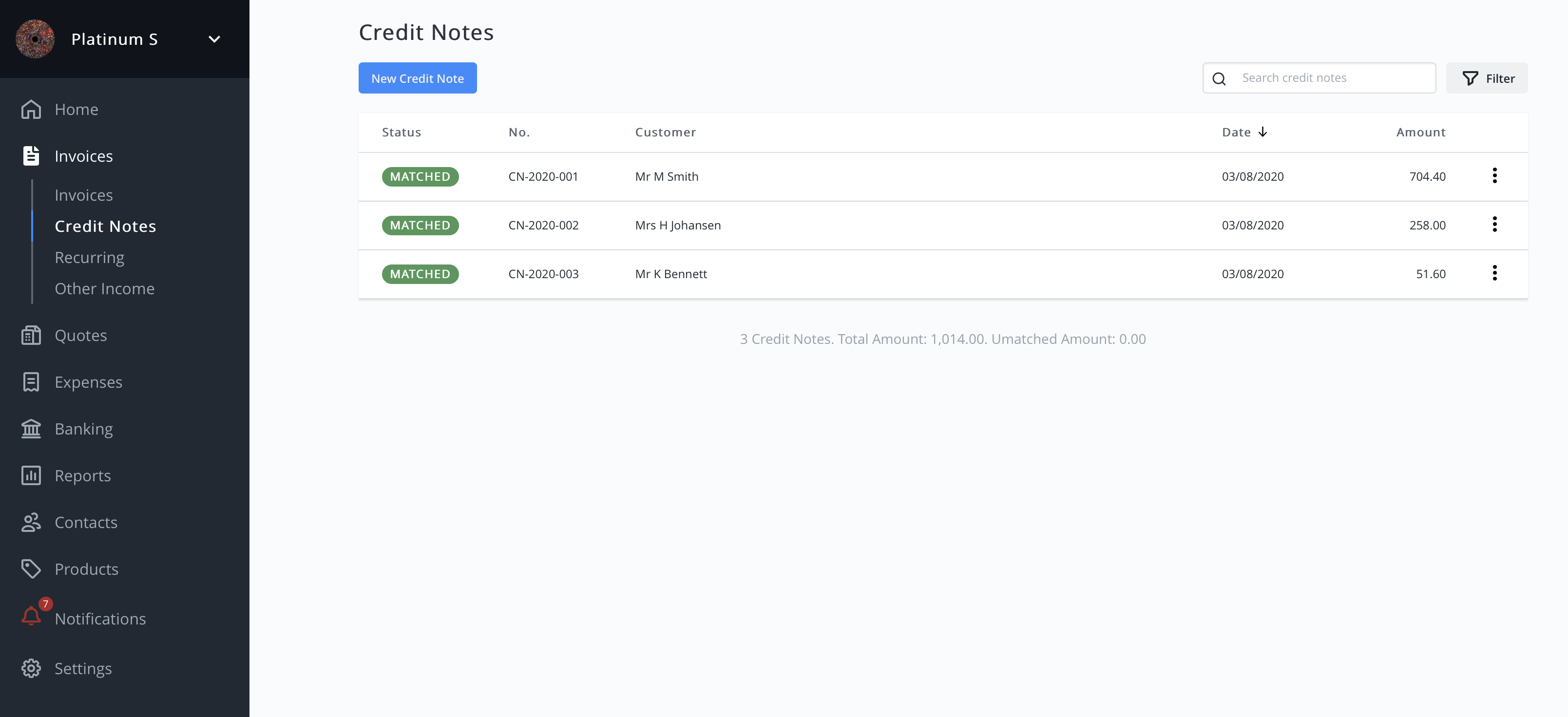Today we announce a new and exciting update to our invoicing software. Credit notes can now be found as a separate tab within ‘Invoicing’ and even has its own independent numbering system. Writing a credit note has never been simpler!

This new feature allows you to organise all of your credit notes together in one location and automatically match your credit notes with invoices, just like how you can match payments for an invoice with your bank transfers.
Where is the new Credit Notes tab?
Our aim is always to make your invoicing as fast and as easy as possible. Therefore, to access credit notes, all you need to do is expand the ‘Invoices’ section of your account and your list of credit notes is right there!
This will make your search for a particular credit note much faster, as you will no longer need to scroll through your entire list of invoices.
So, let’s dive straight into what this new feature offers.
Create credit notes with independent numbering sequences
Whilst in the past, your credit notes were saved within your list of invoices as just another document, you’ll now have your own separate list, just for them. This means that credit notes now also have their own numbering sequence, distinct from your invoices.
Once you start to use this new feature, the default number will begin with the prefix ‘CN’, followed by the year, and then a unique number. Just like your invoicing numbering, you’re able to manually change this, and Debitoor will automatically learn the pattern that you’re using, so there’s no need to write it in every time – Debitoor just knows.

Remember that every invoice needs to have its own unique invoice number? Credit notes are no exception to this. If you accidentally try and save a new credit note with the same number as an existing one, the system will tell you and suggest a new number following your numbering pattern.
Why is independent numbering so useful for credit notes?
The simple answer is that it clearly distinguishes them from other invoices. You can independently keep track of your credit notes and make sure that everything is in order.
Moreover, if either you or your customer want to store a paper copy of your documents, distinguishing your numbering for invoices and credit notes will make it easier to find the paper you need. That’s why it’s a good idea to include the ‘CN’ prefix in your numbering.
How to write a credit note with Debitoor invoicing software
To apply a credit note to an invoice in Debitoor, just open your list of invoices and choose the invoice you want to issue a credit note for. Tap ‘⋮’ in the top right corner and select ‘Create’ > ‘Credit Note’. Then simply check the information and credit note number, and finish your credit note by clicking ‘Complete’.

Credit notes are usually created to cancel or amend an issued invoice. Therefore, you should first open the invoice you would like to cancel and create the credit note from there. However, if you would ever need to create a standalone credit note that’s not automatically linked to an invoice, you can do this by opening the Credit Notes tab, selecting ‘New Credit Note’ and manually enter the information for your credit note. You’ll then need to go back into the credit note and click ‘Add Payment’ to match this document with a refund entry on your bank statement.
How to send your credit note to your customer in Debitoor
You can issue your credit note to your customer by simply opening the document and clicking ‘Send’. This will send an email to your customer with the credit note attached as a PDF.
Match your credit notes with invoices and bank transfers
As already said, the new credit notes tab will match your credit notes to the invoice it cancels out and the bank transfers you have recorded in the Debitoor system.
It’s super easy to match your credit notes with your invoices. By opening the invoice first and then creating a credit note, the system already knows exactly what needs to be refunded. When you then tap ‘Complete’, the system will match the credit note with an invoice.

When you then go back to your list of credit notes, you’ll see its status will be marked as ‘Matched’, guaranteeing that everything is in order. The status of the unpaid invoice will also change to ‘paid’. With both documents automatically marked as green, you know everything is correct and there is no discrepancy in your accounting.
